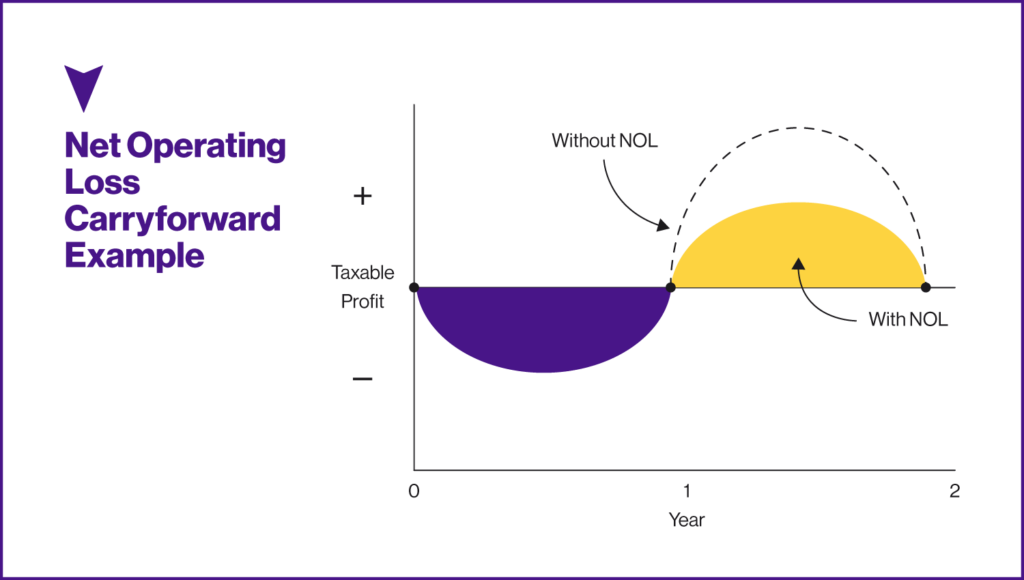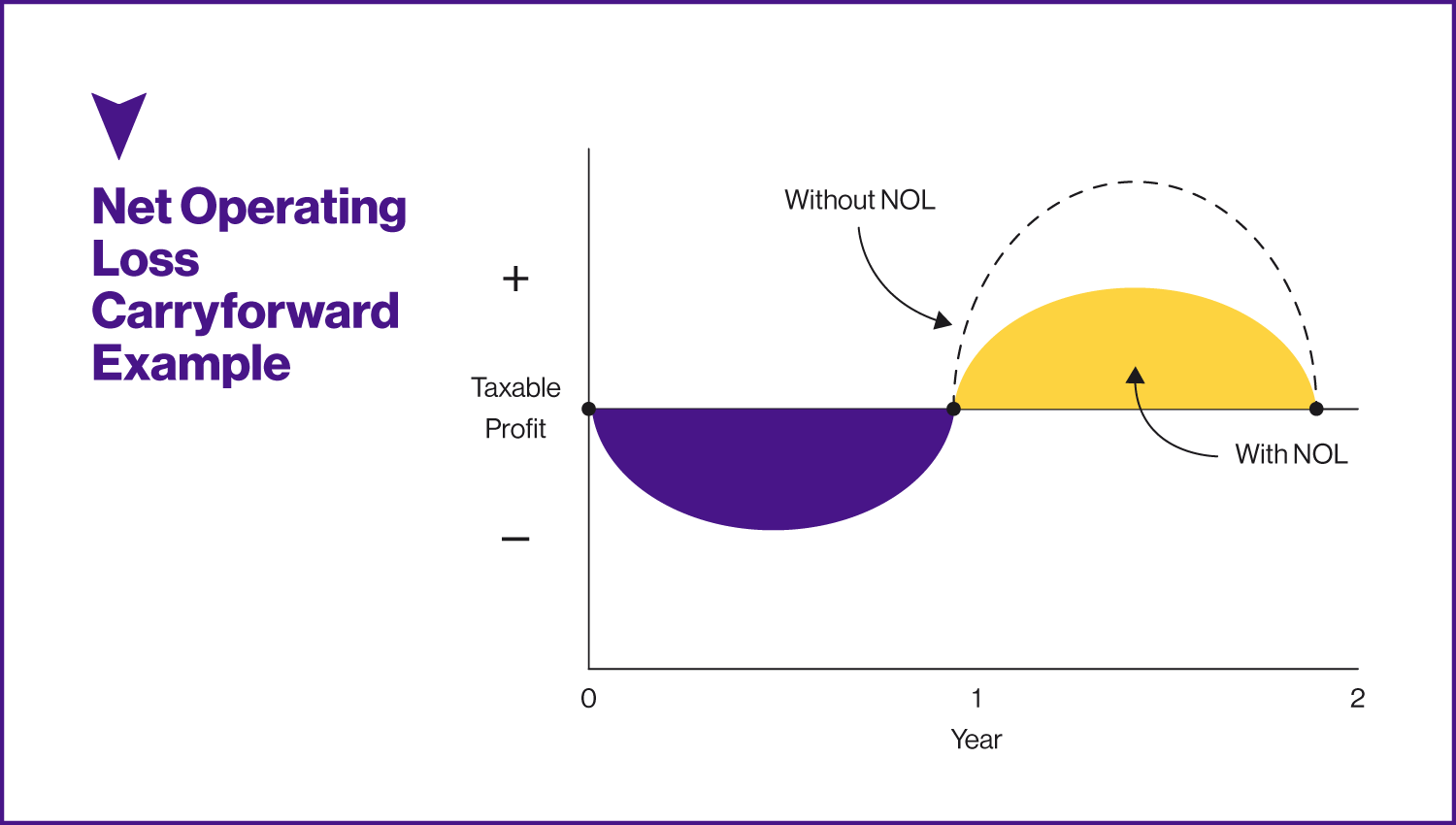If you know how to use net operating losses to your advantage, you can strategically time investments to save money on your taxes.
You do this by using an unprofitable year to offset future profits, which may sound a bit complicated. Not to worry. In this guide, we’ll present the rules and limitations of net operating losses and demonstrate how to use them to save money and grow your business.
Table of Contents
Navigating tax advantages like net operating losses can be a headache. InDinero’s business tax services can save you time and money, as our team of professionals will ensure you’re making the most of every tax year.
What is a Net Operating Loss?
Net operating loss occurs when a business’s permissible deductions surpass its taxable revenue during a given year. In other words, when a business loses money.
What Are the Uses of a Net Operating Loss?
Business owners can use net operating loss to manage their finances strategically. There are two primary ways to do this:
Method 1: Using a year of poor performance to offset a good year
No business wants to record profit losses, but if you do, this tactic can be a silver lining. Think of this method, called a net operating loss carryforward, like a coupon; things went poorly this year, but you’ll get a discount on next year’s taxes.
When done correctly, your tax professional will apply last year’s loss to this year’s profit as a tax deduction. For example, if your business lost $50,000 last year but earned $150,000 this year, you could apply a net operating loss carryforward and only pay tax on $100,000 of your profits from this year.
Related: Learn how to calculate gross vs. net income to determine whether you’ll be profitable or take a loss this tax year.
Method 2: Strategically timing investments
A profitable business can invest in growth tax-efficiently by taking advantage of net operating loss rules.
Imagine this scenario: You’ve turned a $100,000 profit, and your estimated taxes are $25,000. However, you’ve been considering expanding and need to invest $200,000 to do so.
If you make that investment before the end of the tax year, you’re now reporting a loss of $100,000. You’ll no longer owe the $25,000 in estimated taxes, and you can use the loss to reduce your tax burden in subsequent years.
For those interested in strategically timing expenses to reduce tax liability in other ways, consider reading our article on cash vs accrual accounting.
Net Operating Loss Carryforward Example
These methods can seem complex when written out, so we’ve put together an image to demonstrate how a business could use a net operating loss to save money on its tax bill.

In year zero, our hypothetical business reported a net negative profit. It wasn’t so bad that they closed up shop, and they were profitable the next year. They used their year-zero loss to offset taxable profits in the following year; this is a net operating loss carryforward.
Who Can Claim a Net Operating Loss?
Any business that records a loss in a given year may claim a net operating loss. This tool can be used by sole proprietors, LLCs, partnerships, C-Corps, and even S-Corps.
Related: How to convert LLC to S Corp or C Corp
However, the rules for partnerships and S-Corps are considerably more complicated than others. IRS rules state that these entities generally cannot use a net operating loss carryforward, but that the partners or shareholders themselves may take the deduction, in proportion to their share of ownership, to offset their personal incomes.
Those specific rules are outside the scope of this article; if you’re in this situation, consider engaging inDinero’s accounting services for assistance.
Net Operating Loss Limitations
Using net operating losses can save your business significant money, but the IRS has guidelines to ensure the rule isn’t abused.
First of all, the rule only applies to income. That means other liabilities, such as sales or property taxes, cannot be reduced with this method.
Net Operating Loss 80% Limitation
A carryforward can’t be used to reduce next year’s tax liability to zero. The maximum deduction in any given year is 80% of taxable income. That means no matter how large of a loss you’ve taken in previous years, you’re still on the hook for at least 20% of your net profit.
Thankfully, the IRS allows businesses to carry their net operating losses indefinitely into the future. The old rules set a cap at 20 years, but the Tax Cuts and Jobs Act did away with this limitation.
If you can’t use the entire net operating loss because of the 80% annual limitation, you can still use it next year.
Net Operating Loss Carryback Limitation
A net operating loss carryback is where this year’s losses can be used to earn a tax refund from a prior year’s taxes. Unfortunately, recent IRS rule changes nearly completely forbid this practice.
For tax year 2021 and forward, this practice is completely prohibited for everyone except farming businesses and certain insurance companies. 1
Losses during tax years 2018, 2019, and 2020 can be carried back.2
Section 382 Limitation
The IRS (in Section 382 of the tax code) generally limits net operating loss carryforward for corporations that have ownership changes greater than 50%. They do this because they don’t want the owners of corporations to sell their net operating losses. This is called a Section 382 NOL limitation—or, simply, a 382 limitation.
This annual limitation is calculated by multiplying the market value of the business by a percentage, usually about 2%. If a business was valued at $2 million, the maximum net operating loss carryforward they’re eligible for is $40,000 (2% of $2MM).
Note: The Section 382 NOL limitation rules are complicated, and this article only covers the basic ideas. To explore more about this limitation, speak with an expert from our business tax services team.
Record Keeping and Documentation
Keeping detailed records of your finances is essential if you want to take advantage of net operating losses.
Not only is it impossible to know how much of a net operating loss you’re eligible for without these records, but you’ll also need these in case of an IRS audit.
We’ve written about how to keep track of business expenses by systematizing record-keeping. If you’re not already using an automated software tracking system, give that article a read.
Conclusion
Running a profitable business is challenging. Fortunately, the IRS does its best to encourage the survival of as many businesses as possible; net operating loss carryforwards is one such form of assistance.
For more help managing your business’s financial side, contact Indinero today.





